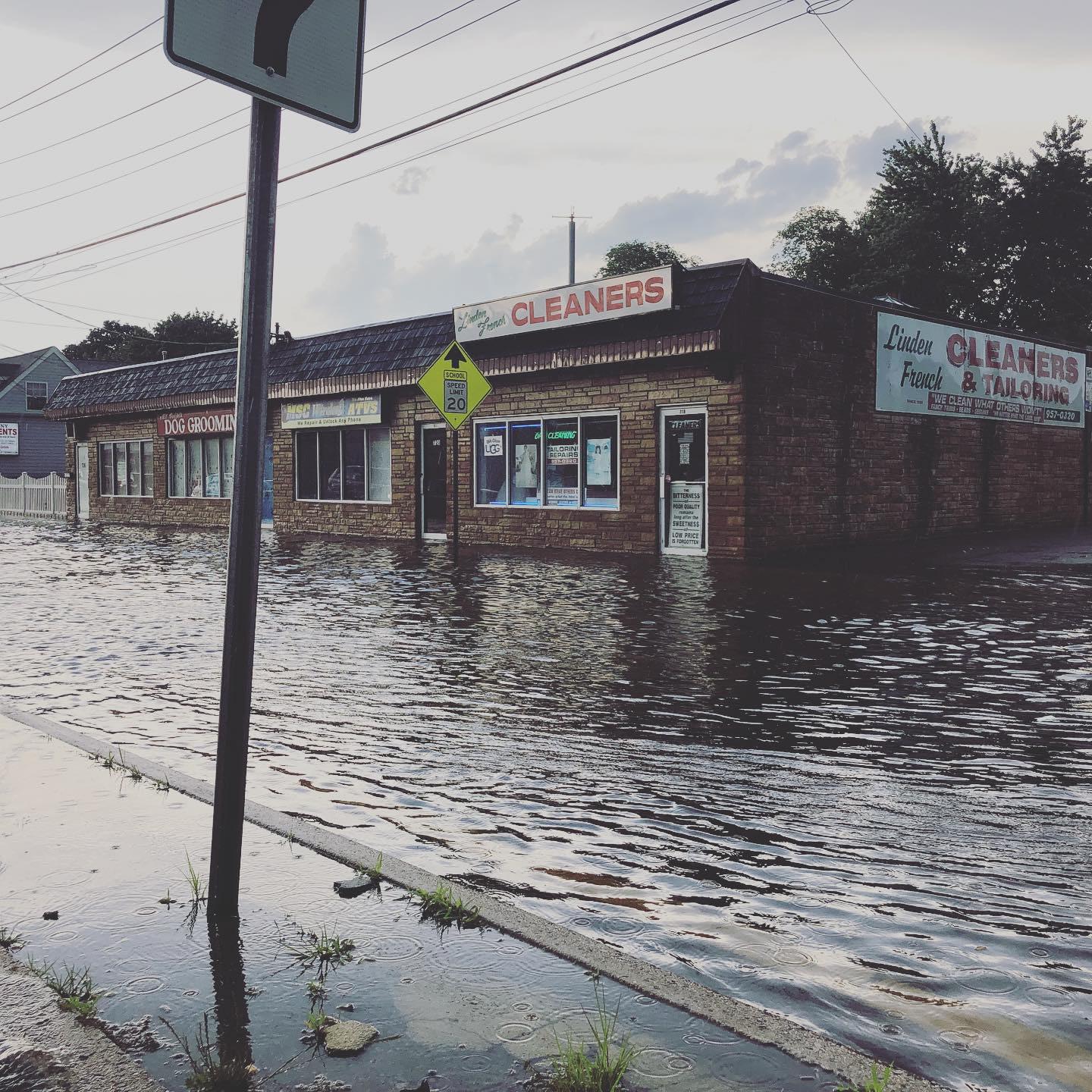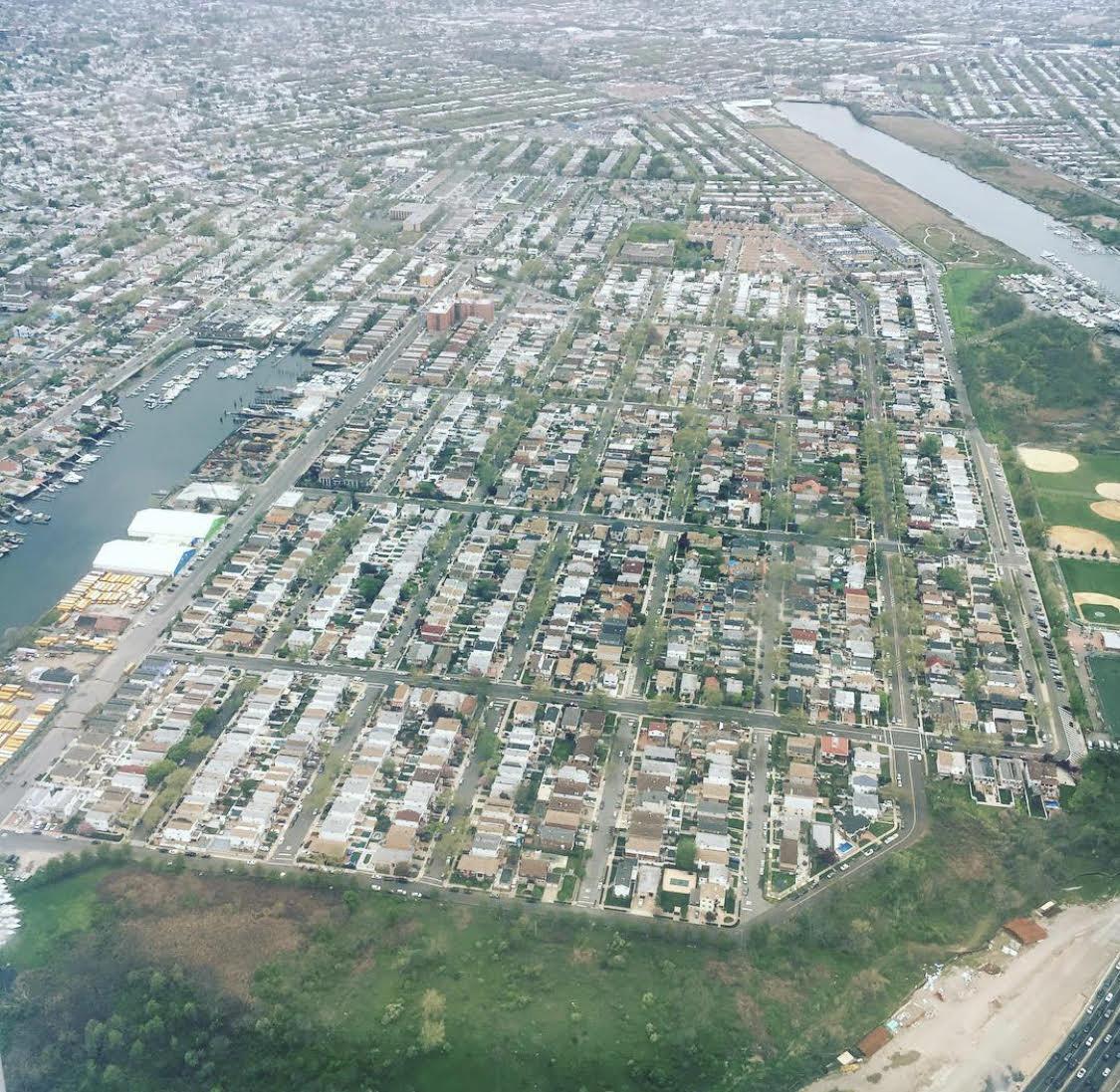
6 minute read
Architects, stop calling it “managed retreat.” Daniel Horn, AIA
Architects, Stop Calling It “Managed Retreat”
The majority of U.S. coastlines are being threatened by sea level rise at an alarming rate. Architects are now more engaged in a discussion about managing the “retreat” of entire communities from vulnerable coastlines. But the language they continue to use is perpetuating a top-down approach.
Above: Nuisance flooding in Lindenhurst, N.Y., 2018. Image credit - Dan Horn
Sea level rise and the compounding risks of climate change will bring the greatest risk to front-line and environmental justice communities in modern times. The overwhelming science shows that the current and future increase in sea levels, projected through 2100, will be detrimental to low-lying areas. One thing is certain: These communities will bear the brunt of the impacts if nothing is done about it.
Moving is financially, psychologically, and politically difficult, but it will need to be seriously considered to protect the communities that reside there. And while it may be easier to talk about elevating homes, building large and expensive infrastructure to protect the areas with interventions like sea walls and offshore wave attenuation structures, these are simply costly temporary fixes, putting off the inevitable.
Communities face an ever-increasing risk of large-scale governmental initiatives tearing generations of rich culture,

Above: Buyout properties that have been abandoned in South Lindenhurst, N.Y., 2018. Image credit - Dan Horn character, and livelihoods apart. “Managed retreat” is to blame, the “official” policy terminology for the relocation of entire neighborhoods out of high-hazard, repetitive-loss areas. The verbiage depicts the destructive approach taken by nationwide programs to change the way people reside near coastlines.
Buyouts vs. Managed Retreat
Built environment professionals have talked about relocating entire communities away from vulnerable coastlines for decades as the science behind climate change evolved. The discussion of relocating coastal communities rose out of necessity after Superstorm Sandy ravaged the East Coast of the U.S. in 2012. In its aftermath, the federal government, through state-sponsored programs, provided affected homeowners financing to rebuild and, in the most severely damaged areas, offered to “buy out” these high-risk properties in the floodplain. Several hundred homes in the communities of Fox Beach, Ocean Breeze, and Oakwood Beach on New York’s
Staten Island were a few in particular where a majority of the residents collectively chose to leave for good. According to Next City, “Under the program, properties that were purchased should have been maintained as open space or transformed into coastal buffer zones, parks and other non-residential uses that will help protect nearby communities from the impact of extreme weather.”1
The term “buyout” has been around for decades. It is the policy term FEMA and other governmental authorities use to describe areas where individual residential properties within a state-run recovery and resiliency program voluntarily opt to be purchased by the state. Where the terms “buyout” and “managed retreat” differ is in their scale. Buyout can mean as little as one property or as many as a few hundred. Managed retreat, on the other hand, refers to entire coastal towns having to leave because it becomes impractical to remain. This could involve thousands of properties and families. As the climate has evolved in its grim predictions, so has the language to describe interventions to combat it. Managed retreat has become the seemingly official policy and architectural lexicon.
As called out in Politico, “Experts agree that ‘managed retreat’ is a terrible term that gets in the way of selling the idea to coastal communities and their elected representatives. After all, who wants to give up and ‘retreat’ ”? Further, it goes on to say “terminology may seem silly, but given that political decisions are driven by public sentiment, finding a less defeatist alternative for managed retreat may be key to making it viable.” 2 Experts in the field of climate change science and members of the architecture-engineeringconstruction community seem to have adopted “managed retreat” without fully comprehending the current and future implications of doing so. It implies a top-down, governmentdirected approach. Front-line and environmental justice communities who are the most at risk from sea level rise and other hazards deserve a more inclusive and thoughtful title for something that may upend their lives forever. The time is now to begin to realize the impact language can have on these conversations with communities moving forward.
Enacting Change Now To understand the impetus for changing this term and why it matters, there are a series of critical questions to ask: Who is managing the retreat? What are they “managing”? What is the level of community involvement, and how is it sustained? How will the local or state government gain the trust of those slated to “retreat”? Who decides who stays and who goes? Communities, local leaders and advocates, and design professionals must come together now to begin forming more empowering and empathetic terms of engagement. This will all stem from earning the community’s trust. Unfortunately, architects overall have a poor history of connecting with the communities that they serve. Community engagement is usually granted only a small part of large projects. It requires much more than that. A thoughtful and sustained campaign to hear the community’s concerns and ideas can bring alternative solutions to the table. The issue ahead is twofold: Residents who will be affected by coastal flooding need the information and tools necessary to make their own informed decisions, and architects need to be more attuned to what community priorities actually are, instead of driving their own prerogative. A top-down approach does not fully recognize the priorities and needs of the community. Professionals involved in outreach typically only scratch the surface, and cost more time and money, something that proper outreach and engagement are never afforded. Trust is earned when the outsiders can

Above: Bergen Beach was severely damaged during Superstorm Sandy in 2012 and remains vulnerable to future storms. Image credit: Dan Horn
understand the positive and negative impacts of the proposal. They hear stories, gather data, hold meetings, and synthesize all the information given to them by the community. This can take years, sometimes decades. It can never be rushed to simply fulfill artificial project requirements.
Architects, Step Up A realistic guide for starting a conversation Architects have an ethical and moral responsibility to protect the public’s health, safety, and welfare. They can be uniquely positioned to earn the community’s trust if they approach it the right way. Envisioning all the opportunities within a project is exactly what is needed at this critical juncture and must be done with communities lighting the path ahead. By encouraging ground-up conversations within the community, they can help members navigate tough decisions. Everything that architects do, or don’t do, will affect these conversations moving forward. So how can architects be involved? Architects work in the built environment and must go through many regulatory hoops to get projects approved. Every interaction with a plan examiner, inspector, client, community advocate, and contractor is a means by which architects can begin a small conversation about the impact to the adjacent community. The best time to have this conversation is at the beginning of the design process because that’s when the community’s vision can be the most realized. However, advocacy is impactful at any stage of a project. Architects must recognize that the people most affected by decisions concerning this so-called retreat play a pivotal role in these conversations moving forward.
First, the profession must revisit how it serves communities. Architects must put them at the center of decision-making, realizing a holistic and equitable approach to addressing sea level rise and other consequences of climate change. Then, through working together, the community should inform a new term to replace “managed retreat.”
Footnotes 1 - Graham T. Beck, “This Staten Island Neighborhood Is About to Become a Wetland”, (Nextcity.org, 2013) 2 - Yuliya Panfil, “The Case for ‘Managed Retreat’”, (Politico, 2020)
Daniel Horn, AIA, LEED GA, SEED
Horn is a New York-based architect at ESKW/ Architects who focuses on sustainability and longterm community resilience. He is also co-founder of ORLI+, an emerging design collective working at the intersection of community empowerment, advocacy, and resilience.









